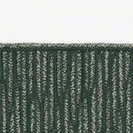Braid Rug
BRAID RUG
Designed By Karin an Rijlaarsdam
Featuring the delicate, organic irregularities reminiscent of natural surfaces, it might be a surprise to learn that Braid is made from recycled post-consumer polyester.
Designed by Karin An Rijlaarsdam focusing on creating sustainable designs with a positive environmental impact – the rug is inspired by braiding techniques, crafts and the landscapes of Grand-Bassam, Ivory Coast where she is based. It is the first design in the Kvadrat rug collection including recycled polyester.
DESIGNER
KARIN AN RIJLAARSDAM
A graduate of the Academy of Arts in Utrecht, Dutch designer Karin An Rijlaarsdam works across several fields including, interior design, textile design, product design and colour design. She travels extensively across the world and often finds inspiration in her surroundings.
“I am obsessed by textures, exploring a soft 3-dimensional texture with a handmade feeling for a textile design, or a smooth ultra-matte, and natural finish for a lighting fixture excites me. The texture defines the skin that brings the object alive, it is generous and represents its uniqueness and personality.”
Karin An Rijlaarsdam is the Creative Director and founder of CLOUD-9 design - a studio focused on creating sustainable designs with a positive environmental and/or social impact.
It is located on the Ivory Coast. She works with a roster of leading design brands across the globe, such as Apple, Beats by Dr Dre, Capellini and Kvadrat.
information
COMPOSITION
- 12% polyester
- 88% recycled polyester
BRAND
Kvadrat
PRODUCTION
Made In India
CATEGORY
Kvadrat rugs
WEIGHT
2,700 g/㎡ (8.85 oz/ly)
COLLECTION
Braid
PRODUCTION METHOD
Stitching
CHARACTERISTICS
- Slight colour differences may occur
- Rug underlay recommended
- Round or odd shape not possible
- Fringe length of 7 cm (2 ¾") at top and bottom of rug
- Irregularities may occur as a result of the hand woven process
- Customisation of lock yarn possible, choose from the standard lock yarn colours
DOWNLOADS
↓ Data Sheet
↓ Story text
HEIGHT
10 mm (½")
LENGTH
90 - 400 cm (2' 11 ½" - 13' 1 ½")
BORDER
Border is refined with a 10 cm wrapping detail in lower right corner
SIZE OF BORDER
Approx. 1 cm (Approx. ½")
DIAMETER
60 - 300 cm (1' 11 ½" - 9' 10")
CRAFTED
Irregularities may occur as a result of the hand crafted process
PRODUCED
Round and oval rug will be produced as a spiral
DETAIL
Braid is made from braided ropes – one thick, one thin. The slimmer rope is stitched in a slightly wavy curve on the thick ropes which gives a beautiful irregularity to the design, then arranged as a spiral for the round rugs, or in rows for the rectangular design, before being stitched into place. To finish, a fine rope is sewn around the rug and the border is refined with a 10 cm wrapping detail on the lower right edge or corner. The making of Braid results in minimal production waste thanks to its stitching technique.
PERFORMANCE
FIRE TESTS
-EN 13501-1 Bfl-s1 • ASTM D 2859/CPSC FF 1-70/FF 2-70, 16 CFR 1630 -There are differing requirements concerning the flame-retardancy of textiles dependent on the area of application, country or even region. Our textiles pass the majority of international standards and are also tested for a selection of regional requirements.
TRAFFIC
-Suitable for moderate to medium residential and commercial use with exceptions of stairways, corridors or with the use of castors -A steel tumbler with rubber studs rolls freely in a rotating drum and wears the surface of the test samples inside of the drum. After 5.000 and 20.000 turns the sample is examined and rated by five inspectors based on the changes in its surface structure and colour. -Rugs that meet the minimum requirements of the test are rated from 21 (worst) to 23 (best) for residential use and 31 (worst) to 33 (best) for residential and commercial use.
LIGHTFASTNESS
-ISO 105-B02 -Lightfastness relates to the ability of a textile to retain its colour under light. When testing for lightfastness, samples are exposed to artificial daylight for a specified period. -The evaluation scale ranges from 1 (worst) to 8 (best). An increase of one point corresponds to a doubling of the lightfastness, i.e. the same fading takes twice as long.













